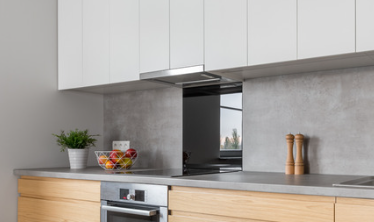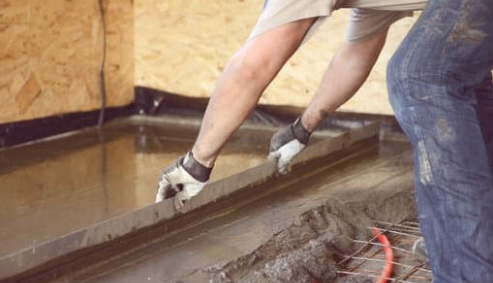Table of Contents
Concrete has stood the test of time as a favored construction material for centuries, yet only in recent years has its raw beauty and versatile appeal come to the forefront of modern interior design. Long disregarded as an austere and uninviting choice, concrete has undergone a remarkable metamorphosis to emerge as a popular choice among designers for its sturdy, long-lasting nature and striking aesthetic appeal. If you thought you were good at blackjack, wait till you create an entertainment space in your house using concrete—the new environment will help you with your skills.
How Did Concrete Become A Popular Option?
 The use of concrete in modern interior design has gained popularity due to its ability to create a unique, industrial-style look that can be both rustic and refined. When used in the right way, concrete can add a touch of modern sophistication to any interior space.
The use of concrete in modern interior design has gained popularity due to its ability to create a unique, industrial-style look that can be both rustic and refined. When used in the right way, concrete can add a touch of modern sophistication to any interior space.
Concrete is a sturdy and durable material that can withstand heavy use and wear, making it ideal for high-traffic areas such as floors, walls, and countertops. When sealed properly, concrete is resistant to moisture, stains, and scratches, making it a low-maintenance and long-lasting option for interiors.
In addition to its durability, concrete is also an incredibly versatile material, so it is used by construction companies in a variety of ways to create different looks and feels. For instance, a polished concrete floor can create a sleek, modern look, while a raw, unfinished concrete wall can add a more rugged and industrial aesthetic.
Kitchen
 One popular way to use concrete in modern interior design is to incorporate it into the design of the kitchen. Concrete countertops are becoming increasingly popular due to their unique, industrial look and durability. When paired with stainless steel appliances and a minimalist color palette, concrete countertops can create a sleek and modern kitchen design that is both functional and stylish.
One popular way to use concrete in modern interior design is to incorporate it into the design of the kitchen. Concrete countertops are becoming increasingly popular due to their unique, industrial look and durability. When paired with stainless steel appliances and a minimalist color palette, concrete countertops can create a sleek and modern kitchen design that is both functional and stylish.
Bathroom
One of the primary benefits of using concrete in bathroom areas is its resistance to water damage. Unlike traditional bathroom materials such as tile or wood, concrete won’t warp or rot when exposed to moisture. This makes it an excellent choice for shower areas, where water is often present. Concrete tiles can be used as a backsplash or shower surround to add interest and texture to the space. Alternatively, a concrete accent wall can create a focal point in the room and add a touch of industrial chic.
Flooring
 Concrete flooring is a particularly popular choice for modern home offices. Its sleek, minimalist appearance is perfectly suited to contemporary design aesthetics, and its durability and low maintenance requirements make it an excellent choice for high-traffic areas. Concrete flooring can be left plain, unadorned, stained, or painted to create a more customized look.
Concrete flooring is a particularly popular choice for modern home offices. Its sleek, minimalist appearance is perfectly suited to contemporary design aesthetics, and its durability and low maintenance requirements make it an excellent choice for high-traffic areas. Concrete flooring can be left plain, unadorned, stained, or painted to create a more customized look.
Walls
Concrete walls are another great way to incorporate this material into modern interior design. Exposed concrete walls provide a textured, industrial look that can be softened with the addition of warm lighting and soft furnishings. Alternatively, concrete can be used as an accent wall to add interest and depth to a space without overwhelming the other design elements.
Accents
In addition to flooring, walls, and countertops, concrete can also be used to create unique and striking pieces of furniture. Choosing a material like concrete for coffee tables, chairs, and even bed frames can add a touch of industrial chic to any space. And because concrete is such a versatile material, it can be molded and shaped into almost any form, allowing designers to create truly one-of-a-kind pieces.
Of course, one of the primary concerns when it comes to using concrete in modern interior design is its perceived coldness and lack of warmth. However, this can easily be remedied with the addition of soft furnishings and warm lighting. Adding plush rugs or cozy throw pillows to a room with concrete flooring or walls can help create a sense of warmth and comfort, while warm lighting can add a cozy glow that softens the harsh edges of the material.
Another concern is the potential for concrete to feel too harsh or industrial in some settings. However, this can be avoided by using concrete in moderation and combining it with other materials and design elements. For example, concrete walls can be softened with the addition of warm wood accents, while concrete countertops can be paired with warm brass fixtures to create a more inviting look.



